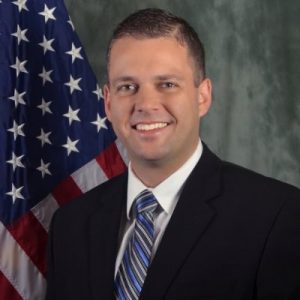
Next-generation warfighter electronics rely on the development of truly disruptive and robust electronic and optical materials in order to enable game-changing advancements in RF/microwave performance and frequency-agility. The device community is extremely materials limited with regard to low-loss RF/microwave materials and major scientific challenges lie within the creation of novel materials and heterostructures with exceptionally high crystalline quality in order to unlock and explore unique and interesting electronic and optical properties. In order to accomplish this, one must either make large investments into costly reactors (MBE for instance), or create novel synthesis schemes in order to access never-before-achieved processing space, thus unlocking the ability to grow novel materials with enhanced physical properties. Recently, at the Materials and Manufacturing Directorate at AFRL, we have built up a state-of-the-art PVD epitaxial growth suite capable of quickly synthesizing and scanning through an enlarged processing space in order to rapidly identify novel materials with enhanced physical properties and assessing their potential for AF application. This talk will focus on the buildup and characterization of both a fully automated UHV pulsed laser epitaxy tool for the growth of high quality ferromagnetic, magnetoelectric, and UWBG oxides and heterostructures, as well as a truly one-of-a-kind and fully automated multifunctional epitaxial growth system (MEGS) capable of applying magnetic fields during both magnetron sputter epitaxy as well as pulsed laser deposition and creating complex metal/metal nitride/oxide heterostructures never before achieve. I will show how these systems are already creating exceptionally high quality transition metal nitride for resilient plasmonics (as TiN and ZrN mirror the properties of gold and silver) and novel magnetic oxides with record low-loss magnetic and microwave performance. Single crystal nitrides grown by sputtering demonstrate properties among the best reported while our novel AlNiZnFerrite material demonstrates record high magnetostriction while mitigating prohibitively large losses (microwave damping). I will briefly touch at the end our expanding effort in the prototyping and characterization of novel magnetic and magnetoelectric materials and devices.
Dr. Brandon Howe is a Materials Engineer at Air Force Research Lab’s Materials and Manufacturing Directorate, Nanoelectronic Materials Branch. He was recruited to AFRL under the SMART (Science Mathematics, and Research for Transformation) Scholarship program in 2006. He graduated in 2011 from University of Illinois at Urbana-Champaign, after studying under the guidance of Profs. Ivan Petrov and Joe Greene. During his time there he won several graduate student research awards in the area of Thin Films and Vacuum Technology. He has spent the last five years renovating, redesigning and constructing a UHV PLD and magnetron sputter epitaxy suite, earning him the 2015 Charles J. Cleary Scientific Achievement Award. He is now leading the Epitaxial Magnetoelectrics effort for Next-Generation Tunable RF/Microwave components, recently recognized by AFOSR as one of their top 10% STAR Team efforts.
